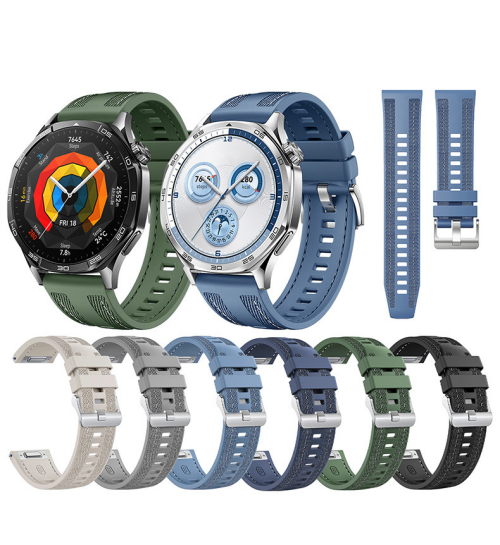Inside the Lab Testing Methods for Sweat Resistance Waterproofing and Durability of Silicone Watch Bands
For professional smartwatch accessory manufacturers, product reliability is more than just design — it’s proven through scientific testing. As the demand for premium silicone watch bands grows among global brands like Apple, Samsung, and Huawei, factories must demonstrate that their straps can withstand sweat, water, and long-term wear under real-world conditions.
This article reveals the key laboratory testing methods used to ensure every silicone band meets B2B clients’ expectations for quality, comfort, and durability.
1. Sweat Resistance Test
The sweat test simulates prolonged skin contact during workouts or daily wear.
In this test:
-
Bands are immersed in synthetic sweat solutions (pH 4.5–6.5) for 48–72 hours.
-
After exposure, engineers evaluate color fading, surface corrosion, and softness retention.
-
High-quality liquid silicone or fluorosilicone materials typically maintain their elasticity and appearance.
Purpose: To ensure no discoloration, odor, or stickiness occurs after repeated exposure to sweat — critical for fitness users and hot climates.
2. Waterproof and Hydrolysis Test
Silicone’s inherent water resistance is one of its biggest advantages, but long-term hydrolysis testing verifies true endurance.
-
Bands are placed in water at 40°C–60°C for several days.
-
Engineers then observe any swelling, surface cracking, or loss of gloss.
-
Advanced versions include salt spray tests to simulate seawater exposure for outdoor and diving use.
Result: Only bands that remain flexible and visually intact qualify for IP67 or IP68 waterproof ratings, suitable for sports and outdoor wear.
3. Durability and Tensile Strength Test
Durability is measured through mechanical fatigue testing to simulate daily bending and pulling.
-
Each band undergoes 5,000–10,000 flexing cycles under controlled tension.
-
The connector and buckle areas are stress-tested to ensure no tearing or deformation.
-
The Shore A hardness and tensile strength (MPa) are verified to confirm long-term stability.
Goal: To ensure the strap can be stretched, twisted, and fastened thousands of times without cracking — ideal for high-frequency users.
4. Environmental Aging and UV Resistance Test
To ensure the silicone band’s color and texture remain consistent:
-
Samples are placed in UV light chambers and high-humidity ovens for 72–120 hours.
-
The band’s surface and flexibility are then evaluated for oxidation and fading.
Key advantage: Premium-grade silicone retains its matte finish and smooth touch even after extended exposure to sunlight and heat.
Conclusion
Every premium silicone watch band that reaches the market must pass a full range of laboratory durability tests — from sweat simulation to UV aging.
By investing in advanced testing facilities and material science, manufacturers can ensure consistent performance, reduce returns, and strengthen trust among global B2B buyers.
Whether you’re developing a sports strap for Apple Watch or a waterproof band for Huawei GT series, verified durability is the foundation of brand value.

